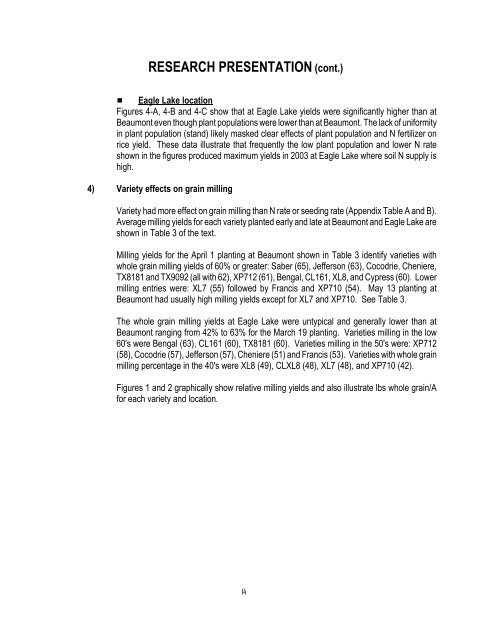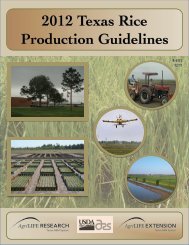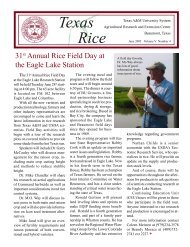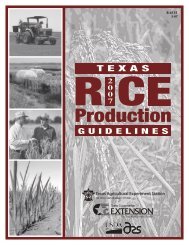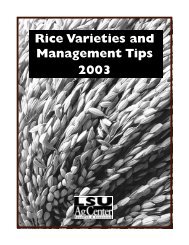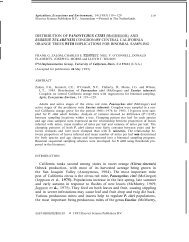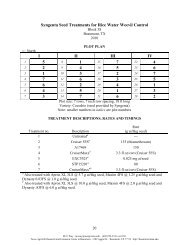Evaluating Potential Rice Varieties from University and Industry ...
Evaluating Potential Rice Varieties from University and Industry ...
Evaluating Potential Rice Varieties from University and Industry ...
Create successful ePaper yourself
Turn your PDF publications into a flip-book with our unique Google optimized e-Paper software.
RESEARCH PRESENTATION (cont.)<br />
# Eagle Lake location<br />
Figures 4-A, 4-B <strong>and</strong> 4-C show that at Eagle Lake yields were significantly higher than at<br />
Beaumont even though plant populations were lower than at Beaumont. The lack of uniformity<br />
in plant population (st<strong>and</strong>) likely masked clear effects of plant population <strong>and</strong> N fertilizer on<br />
rice yield. These data illustrate that frequently the low plant population <strong>and</strong> lower N rate<br />
shown in the figures produced maximum yields in 2003 at Eagle Lake where soil N supply is<br />
high.<br />
4) Variety effects on grain milling<br />
Variety had more effect on grain milling than N rate or seeding rate (Appendix Table A <strong>and</strong> B).<br />
Average milling yields for each variety planted early <strong>and</strong> late at Beaumont <strong>and</strong> Eagle Lake are<br />
shown in Table 3 of the text.<br />
Milling yields for the April 1 planting at Beaumont shown in Table 3 identify varieties with<br />
whole grain milling yields of 60% or greater: Saber (65), Jefferson (63), Cocodrie, Cheniere,<br />
TX8181 <strong>and</strong> TX9092 (all with 62), XP712 (61), Bengal, CL161, XL8, <strong>and</strong> Cypress (60). Lower<br />
milling entries were: XL7 (55) followed by Francis <strong>and</strong> XP710 (54). May 13 planting at<br />
Beaumont had usually high milling yields except for XL7 <strong>and</strong> XP710. See Table 3.<br />
The whole grain milling yields at Eagle Lake were untypical <strong>and</strong> generally lower than at<br />
Beaumont ranging <strong>from</strong> 42% to 63% for the March 19 planting. <strong>Varieties</strong> milling in the low<br />
60's were Bengal (63), CL161 (60), TX8181 (60). <strong>Varieties</strong> milling in the 50's were: XP712<br />
(58), Cocodrie (57), Jefferson (57), Cheniere (51) <strong>and</strong> Francis (53). <strong>Varieties</strong> with whole grain<br />
milling percentage in the 40's were XL8 (49), CLXL8 (48), XL7 (48), <strong>and</strong> XP710 (42).<br />
Figures 1 <strong>and</strong> 2 graphically show relative milling yields <strong>and</strong> also illustrate lbs whole grain/A<br />
for each variety <strong>and</strong> location.<br />
14


